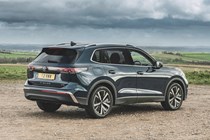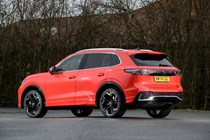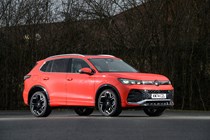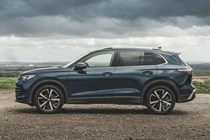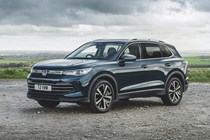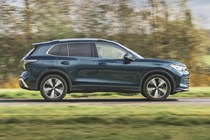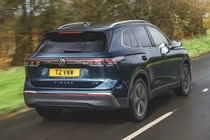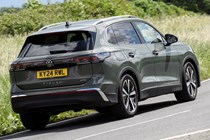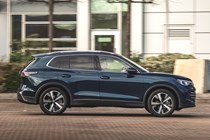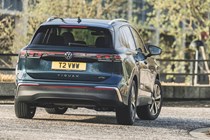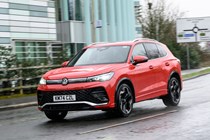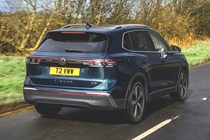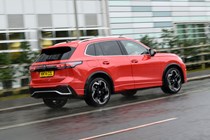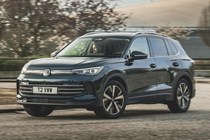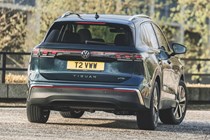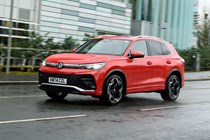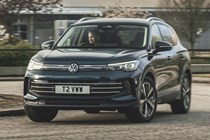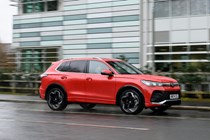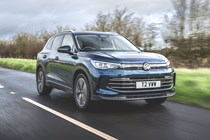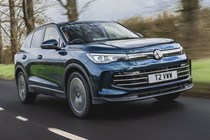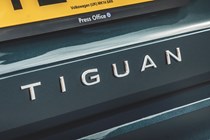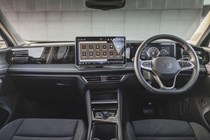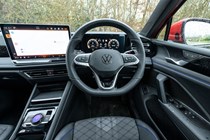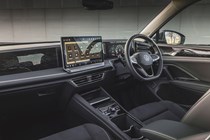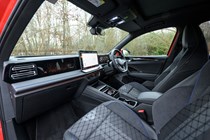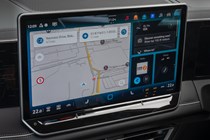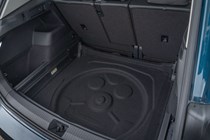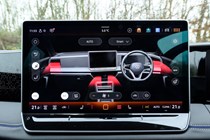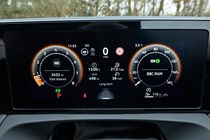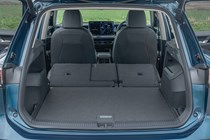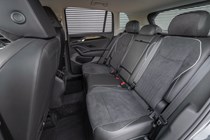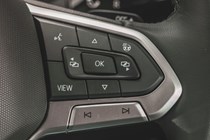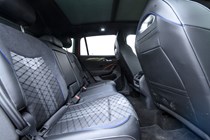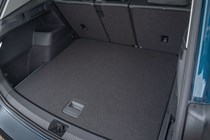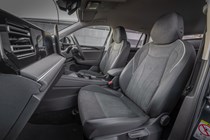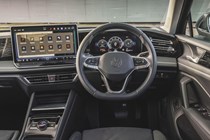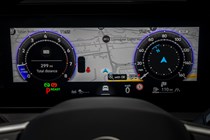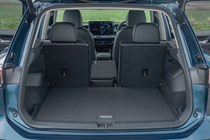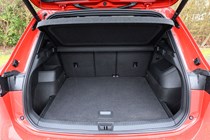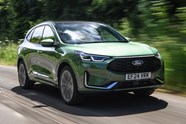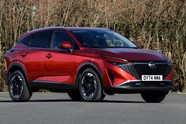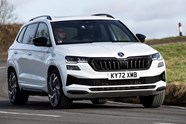
Volkswagen Tiguan review
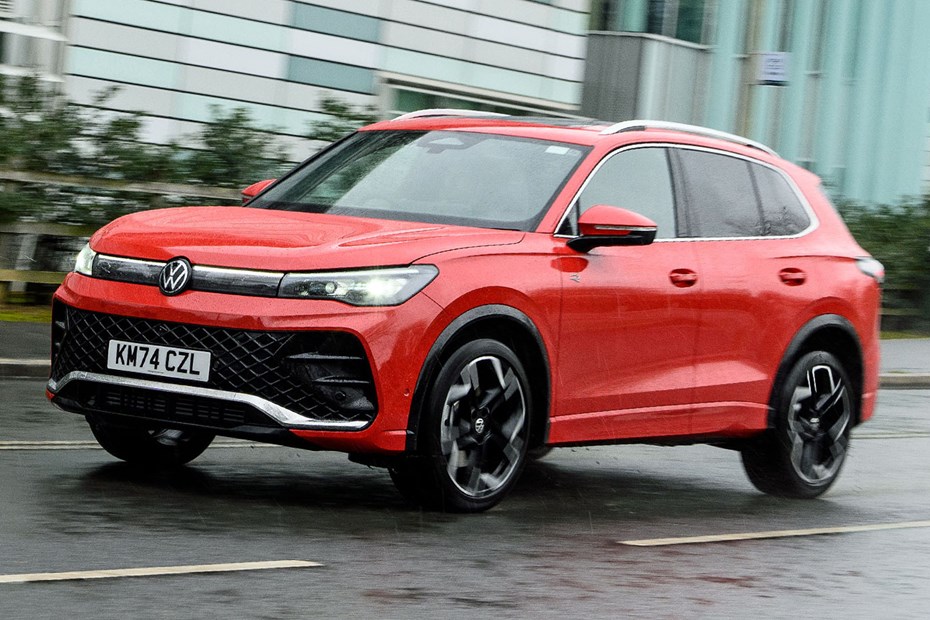
At a glance
| Price new | £37,230 - £51,220 |
|---|---|
| Used prices | £19,696 - £42,846 |
| Road tax cost | £195 - £620 |
| Insurance group | 15 - 32 |
Get an insurance quote with

|
|
| Fuel economy | 32.5 - 52.3 mpg |
| Miles per pound | 4.8 - 6.8 |
| Number of doors | 5 |
| View full specs for a specific version | |
Available fuel types
Petrol
Diesel
Pros & cons
- Offers buyers lots of choice
- Efficient, engaging engines
- Plenty of space inside
- Over-reliance on touchscreen
- Ride comfort can be firm
- Pricey compared with some rivals
Volkswagen Tiguan SUV rivals
Overview
The Volkswagen Tiguan has long been one of the most popular family SUVs on sale. A more practical, high-riding alternative to the VW Golf, it typically outsells that most famous of Volkswagen models globally as well. And though here in the UK we tend to buy more Golfs (and Polos), this third-generation Tiguan is still a very important car for VW. And the family SUV market as a whole.
Introduced in 2024, the latest VW Tiguan is no radical departure from the second-generation Tiguan on the outside but certainly appears bolder and more modern to our eyes. Perhaps surprisingly, we think it looks especially good in brighter colours, such as the Persimmon Red metallic of our latest 265hp R-Line test car.
More importantly, it is comprehensively updated under the skin, and the cabin brings obvious changes. These are most apparent where the optional 15.0-inch infotainment screen is specified, but even the standard screen is 12.0-inches in diameter now. Paired with a digital instrument cluster, VW’s first use of a ‘multifunction driver experience switch’ and fancy backlit interior panels with customisable mood lighting, it makes an engaging impression that just avoids becoming over the top.
Spacious enough for front and rear passengers, equipped with a larger boot than its predecessor, and available with optional adaptive suspension that provides a broad set of parameters, this is a real challenge to even the best rivals. These include the ubiquitous Nissan Qashqai, the popular Hyundai Tucson and Kia Sportage, and in-house VW Group challengers, the Skoda Karoq and SEAT Ateca – though the last two are currently a generation behind the Tiguan they’re still excellent family cars.
Other reasons to take a closer look at the Volkswagen include a wider array of engines – not always a given these days – that still includes a diesel and a choice of plug-in hybrids as well as a selection of regular turbo petrol models.
We have a separate VW Tiguan eHybrid review if you’re most interested in the PHEV variants. On this page, however, we cover our experience of the 2.0-litre TDI turbodiesel as well as the 1.5-litre and 2.0-litre turbo petrols. Most buyers go for a 1.5-litre petrol, but the other engines certainly have their merits. You can read more about how we test cars if you want to understand our evaluation process.
There are five trim levels: Tiguan, Life, Match, Elegance and R-Line. All models get a DSG automatic transmission. Front-wheel drive is the norm, though four-wheel drive is fitted as standard on the most powerful petrol versions.
Over the next few pages our Mk3 VW Tiguan review will take you through every aspect of this popular SUV, covering its practicality, interior, driving experience, comfort and more. Keep reading.



